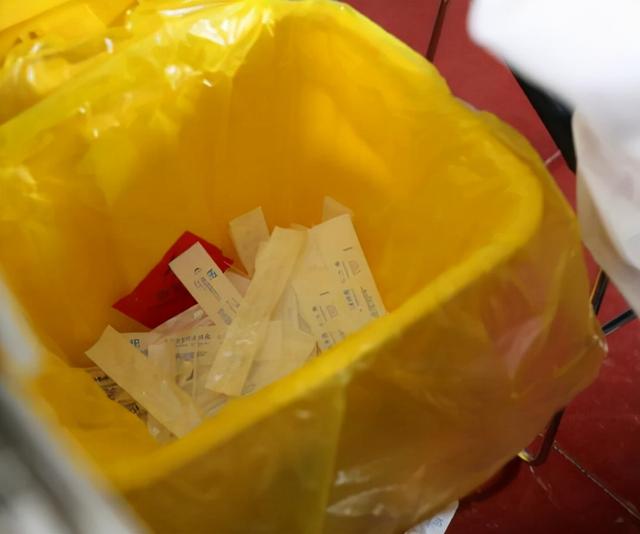医院如何处理拭子废物
2024-11-06
在医院, 拭子 是标本采集的重要工具, 感染控制, 和诊断测试. 然而, 拭子废物管理是医疗机构必须解决的一个复杂问题,以确保环境可持续性和患者安全. 拭子和其他医疗废物的处理受到严格的指导,以最大程度地减少污染并防止感染传播. 以下是医院如何管理拭子废物的概述:
正确处理拭子的重要性
拭子, 包括棉签, 泡沫棉签, 和植绒拭子, 用于广泛的医疗程序. 使用后, 他们经常被体液污染, 病原体, 或化学品. 拭子废物处理不当可能导致交叉污染, 感染的传播, 和环境危害. 医院必须遵守卫生当局和环境保护机构制定的准则,以确保安全处理, 处理, 以及这些材料的回收利用.
步 1: 医疗废物分类
医院管理拭子废物的首要步骤之一就是对废物进行正确分类. 拭子废物属于以下类别 “受监管的医疗废物” (平均重量) 由于其潜在的感染可能性. 医疗废物通常分为以下几类:
- 传染性废物: 这包括用于标本采集或伤口护理并被体液或病原体污染的拭子.
- 锐器废物: 虽然拭子本身并不锋利, 它们可能被针头或其他尖锐物体污染,并进行相应处理.
- 非感染性废物: 一些拭子可能被非传染性物质污染,被归类为无害物质.
通过对废物进行正确分类, 医院确保以适当的方式处理每种类型的废物.
步 2: 安全处置和隔离
收集拭子废物后, 它被分成颜色编码的, 符合当地医疗废物监管要求的防漏容器. 在大多数医院, 使用三层废物分类系统:
- 红色垃圾箱: 对于传染性废物, 例如用于检测病毒或细菌感染的拭子.
- 黄色垃圾箱: 对于一般医疗废物,可能不具有传染性,但仍需谨慎处理.
- 锋利的容器: 对于可能接触过棉签的用过的针头和尖锐物体.
每个废物容器均紧密密封,以防止泄漏并最大限度地降低感染风险. 医院还利用专门的, 生物危害袋用于盛装用过的拭子和其他废物,然后再运至处置区域.
步 3: 处理及处置方法
拭子废物通常经过消毒和处理,以确保其不含任何传染源. 处理医疗废物的方法主要有两种::
- 高压灭菌: 处理传染性废物的最常用方法, 高压灭菌使用压力蒸汽对废物进行灭菌. 高温可确保拭子上的任何病原体在送去最终处置之前被消灭.
- 焚化: 在某些情况下, 医疗废物经过高温焚烧,确保有害微生物彻底消灭. 此方法对于无法高压灭菌的废物特别有效.
灭菌后, 处理后的废物被送往垃圾填埋场或回收设施, 取决于废物的性质. 医院越来越多地采用环保做法, 例如减少产生的不可回收废物的数量, 有的拭子消毒后可以回收利用.
步 4: 回收和可持续发展
最近几年, 许多医院已转向更可持续的废物管理实践, 包括回收和再加工某些医疗物品. 虽然由于污染,拭子本身可能无法回收, 一些与拭子废物有关的材料, 例如包装和塑料部件, 可以回收利用. 医院正在投资废物转化能源技术和可持续处置方案,以减少对环境的影响.
此外, 医疗制造商 正在生产由可生物降解或环保材料制成的拭子和其他消耗品,以减少产生的不可回收废物的数量. 医院还可以通过优化库存管理和减少一次性拭子的不必要使用来减少环境足迹.
步 5: 员工培训和合规
有效的废物管理始于训练有素的医护人员. 医院为所有参与医疗废物处理和处置的人员提供培训, 确保他们了解安全协议和适当废物分类的重要性. 医院也遵守当地, 状态, 和国家法规,以尽量减少接触传染病和环境污染的风险.
结论
医院必须认真管理拭子废物,以保护公众健康和环境. 通过遵循严格的分类协议, 处置, 和处理医疗废物, 医疗机构最大限度地减少与拭子处理相关的风险. 随着医院继续拥抱可持续发展, 废物管理实践将不断发展以满足医疗保健需求和环境目标.

















